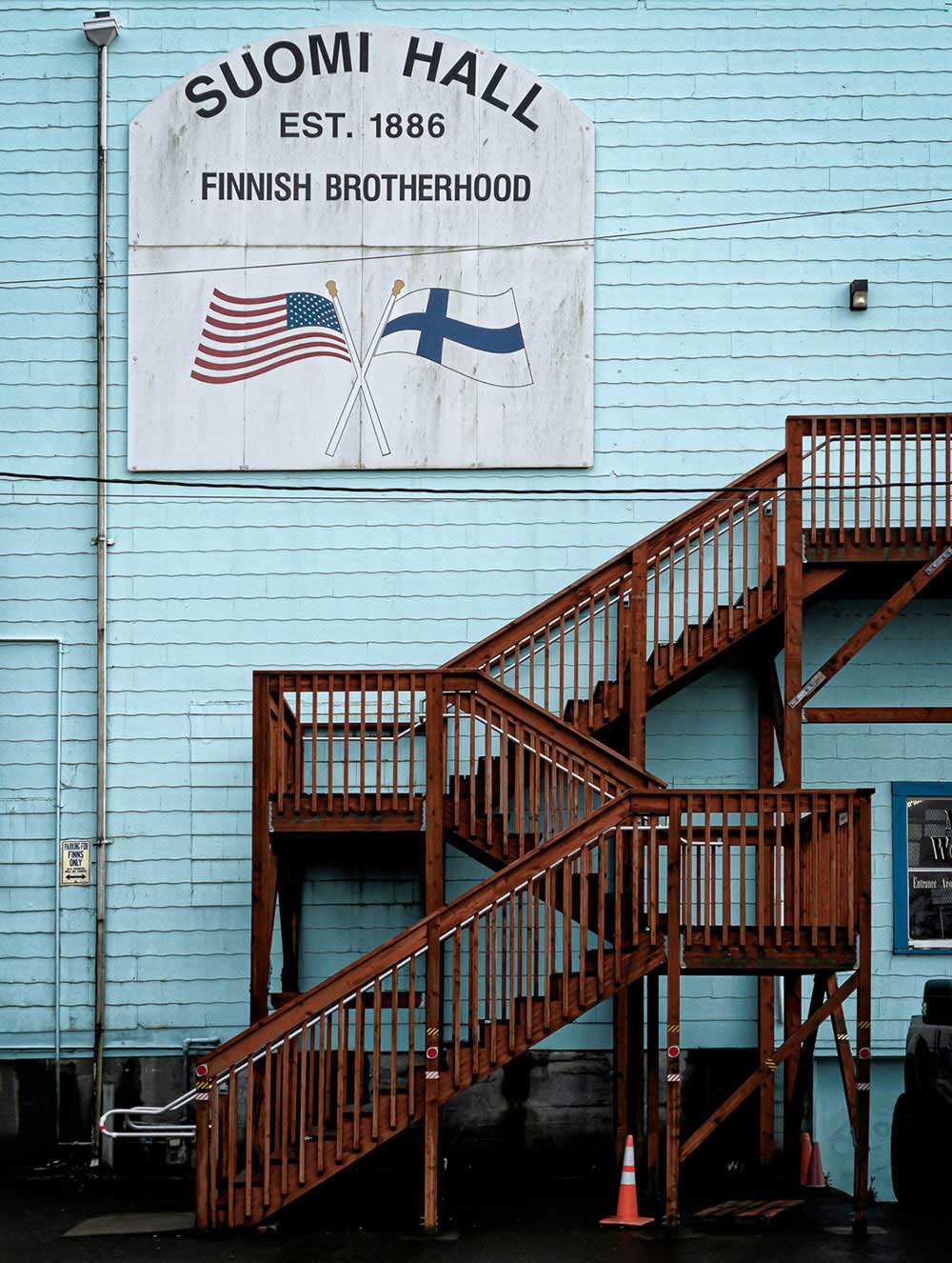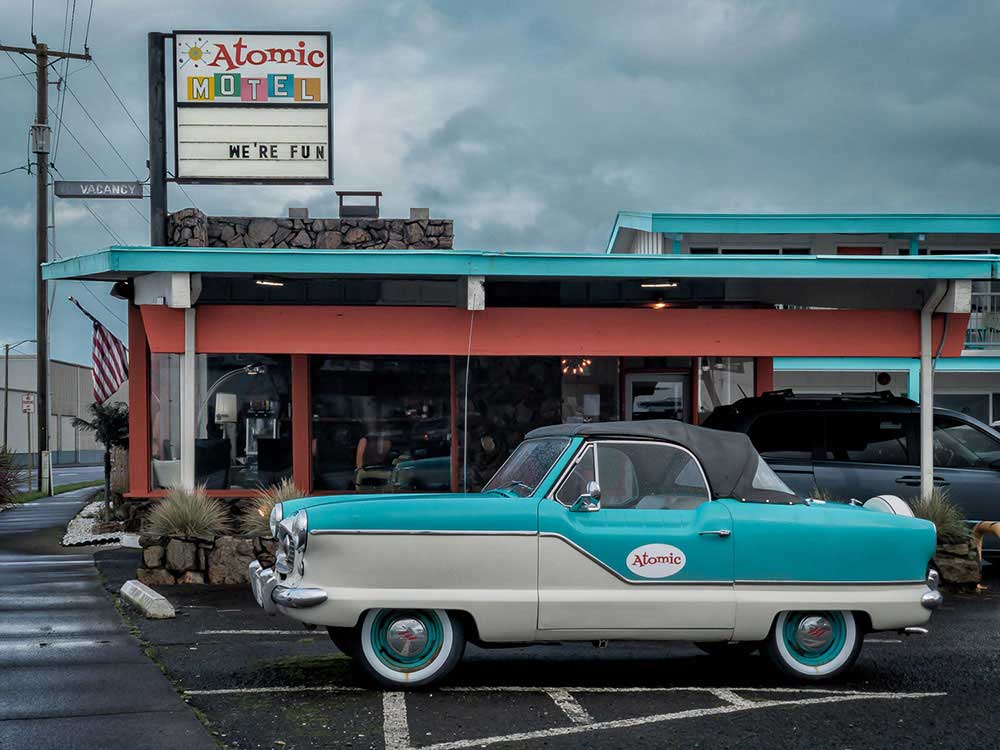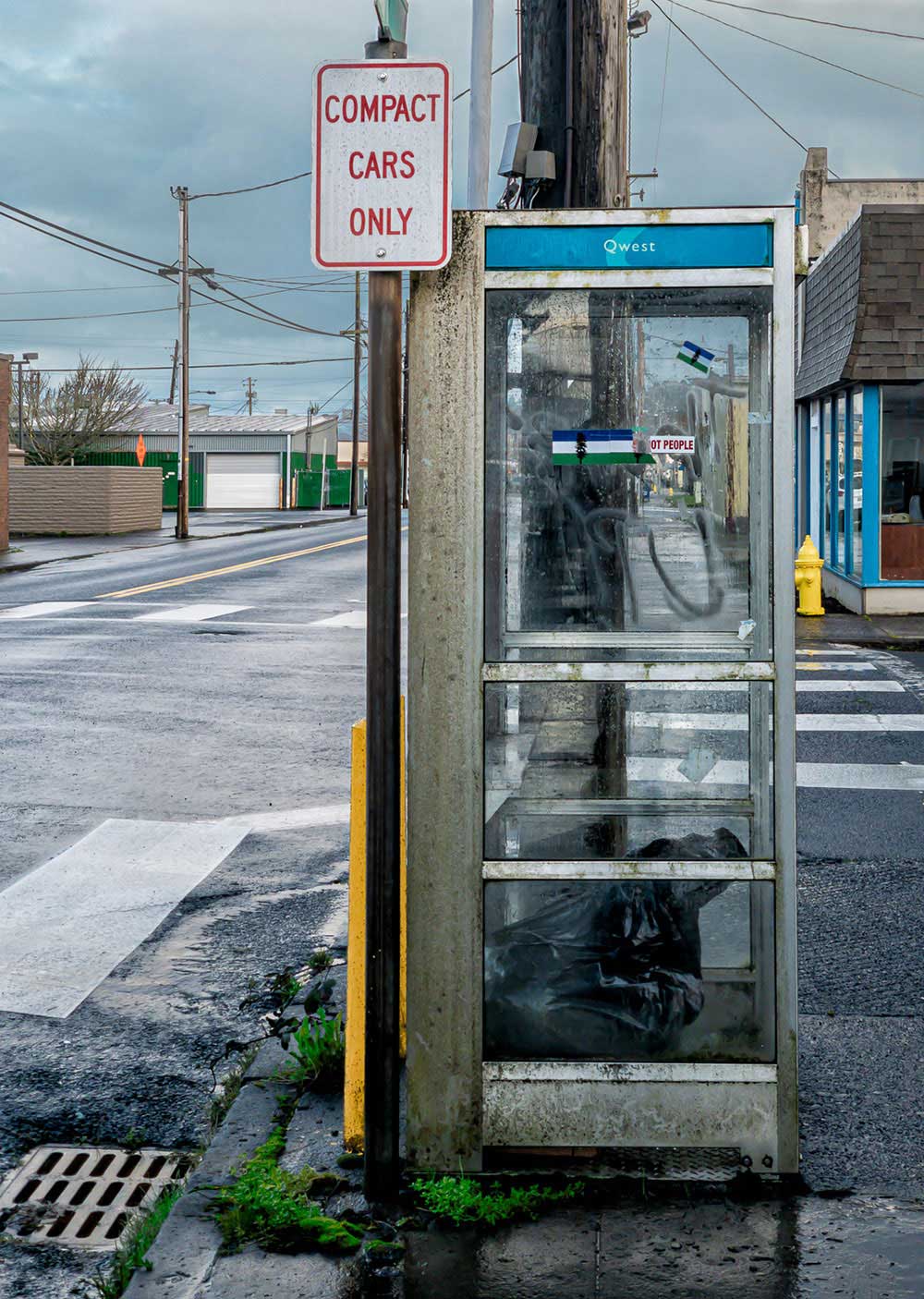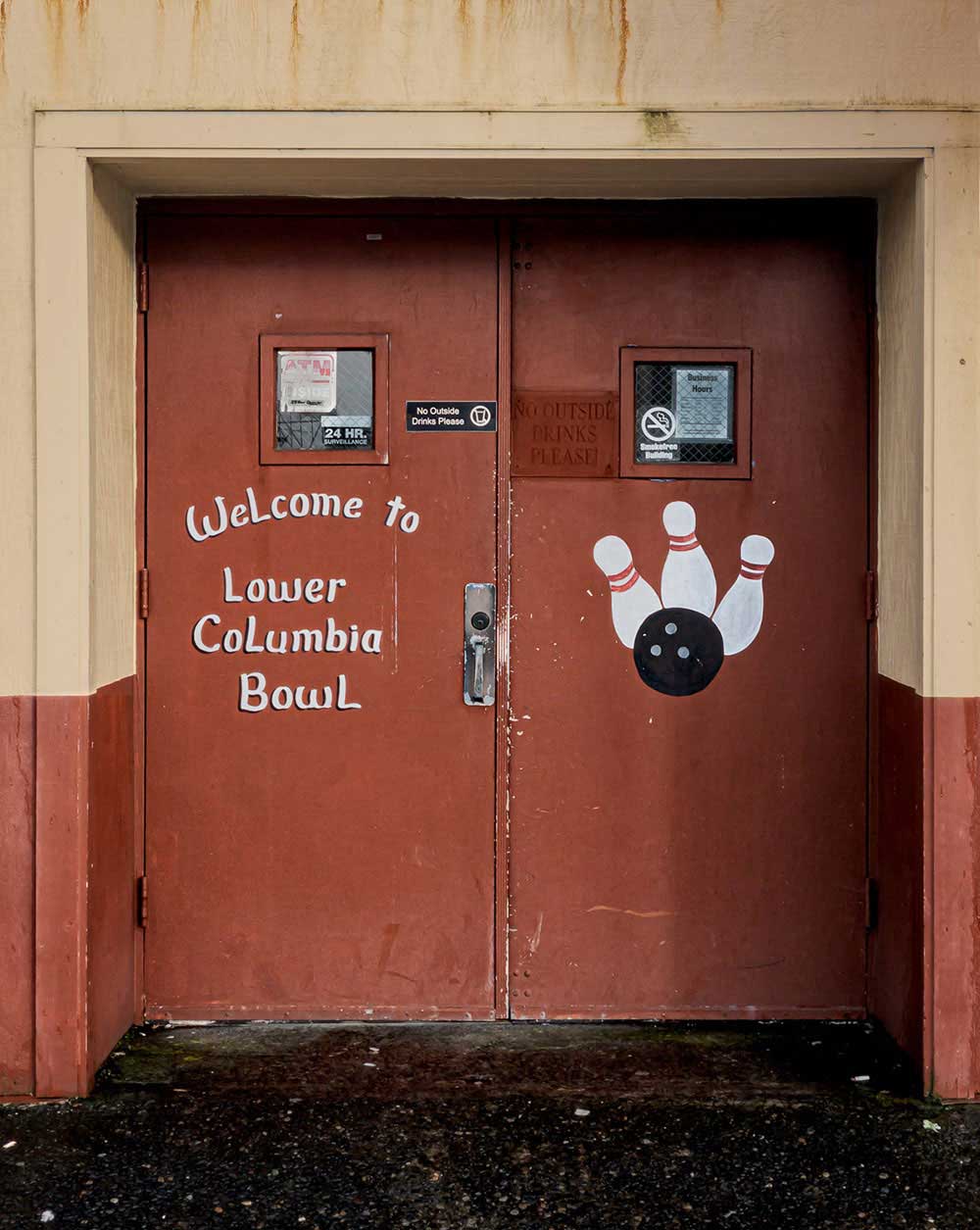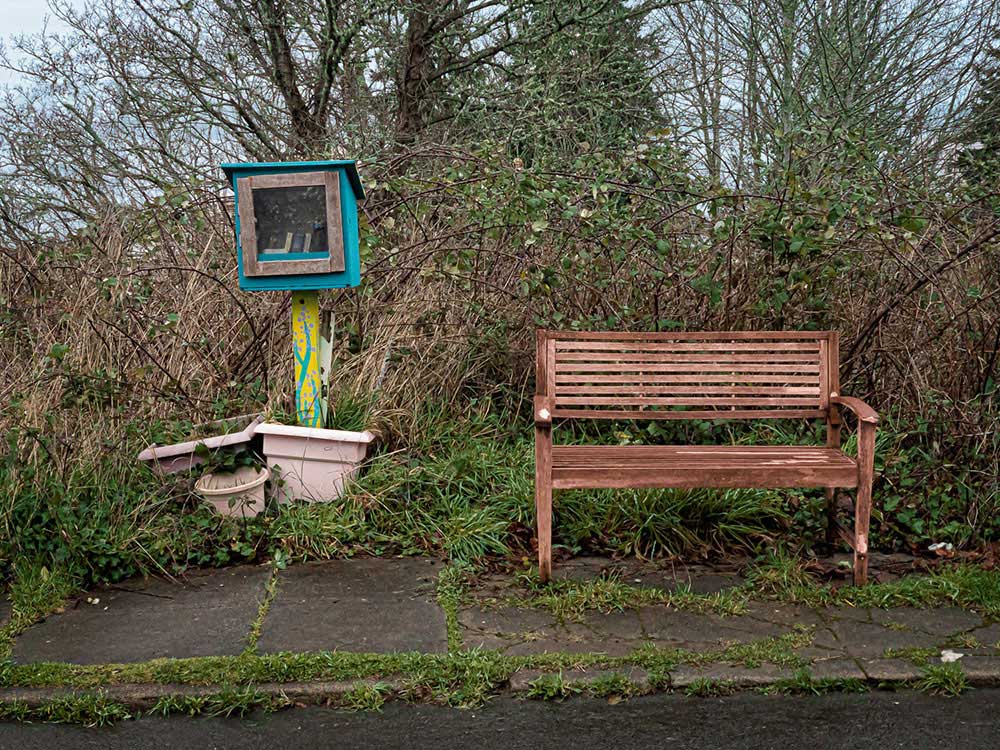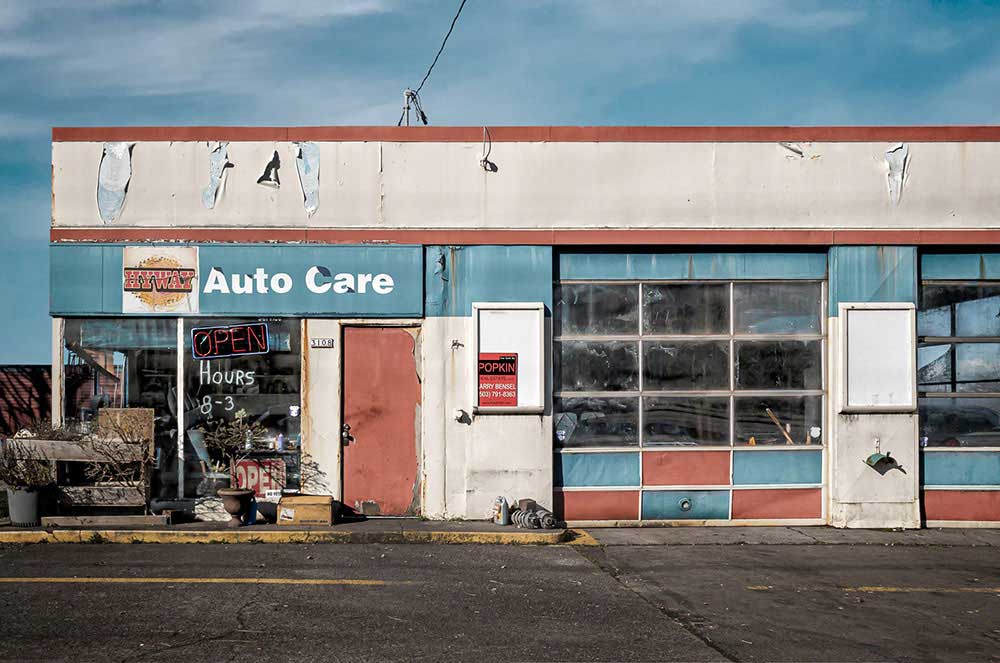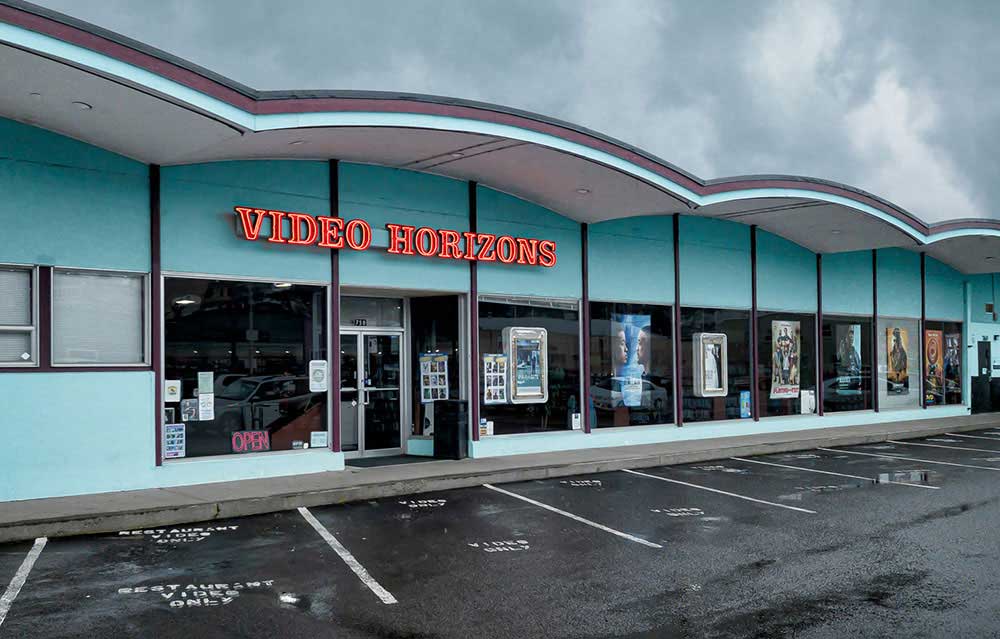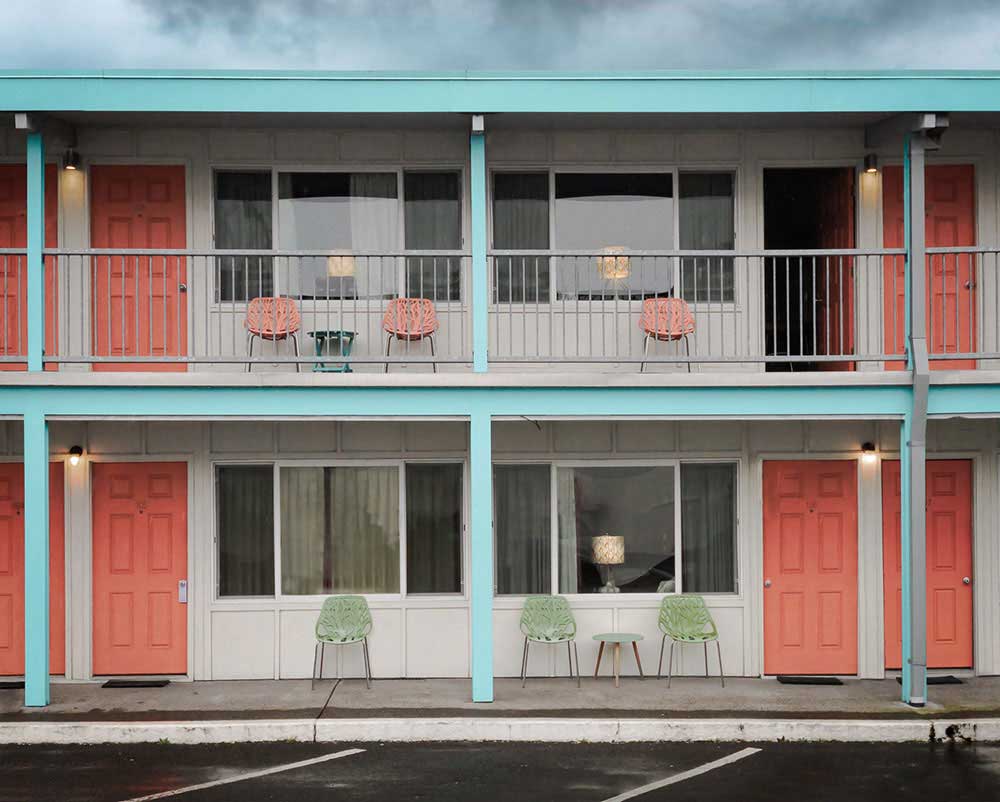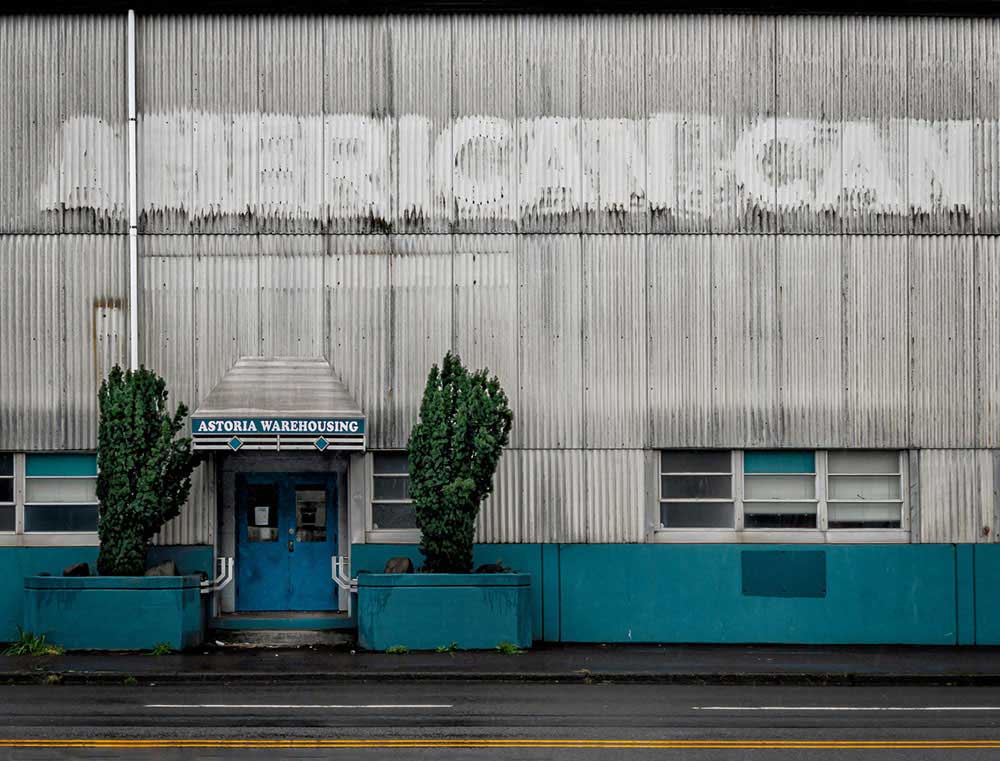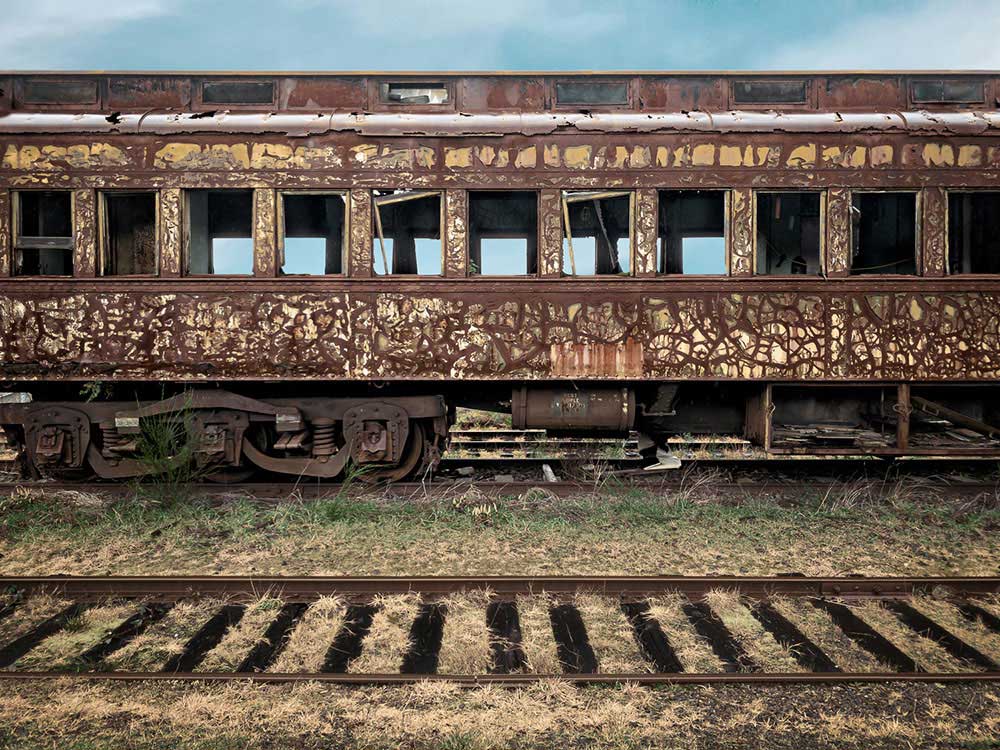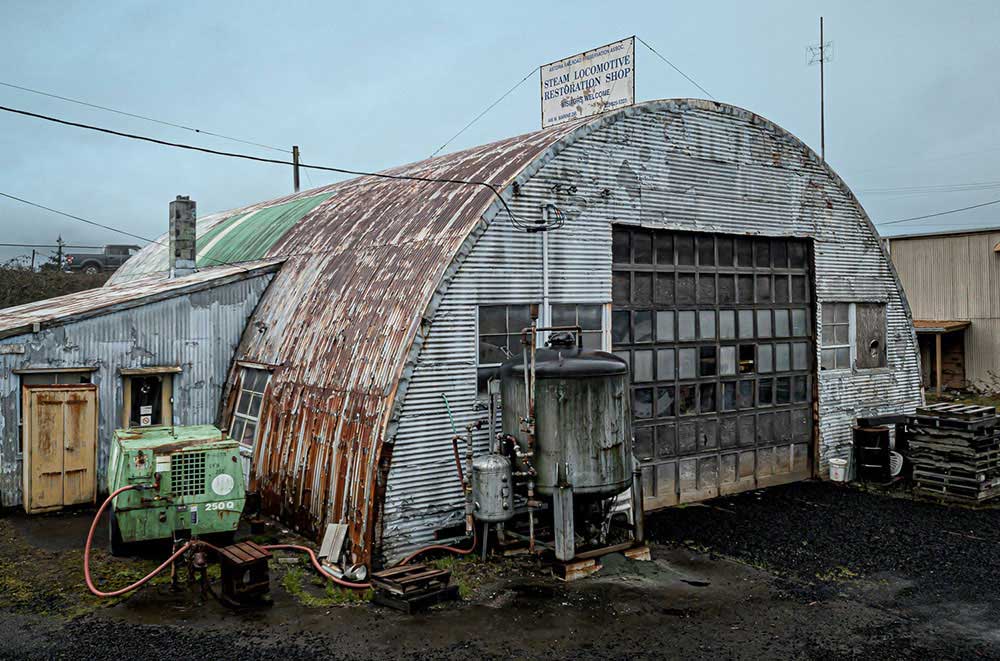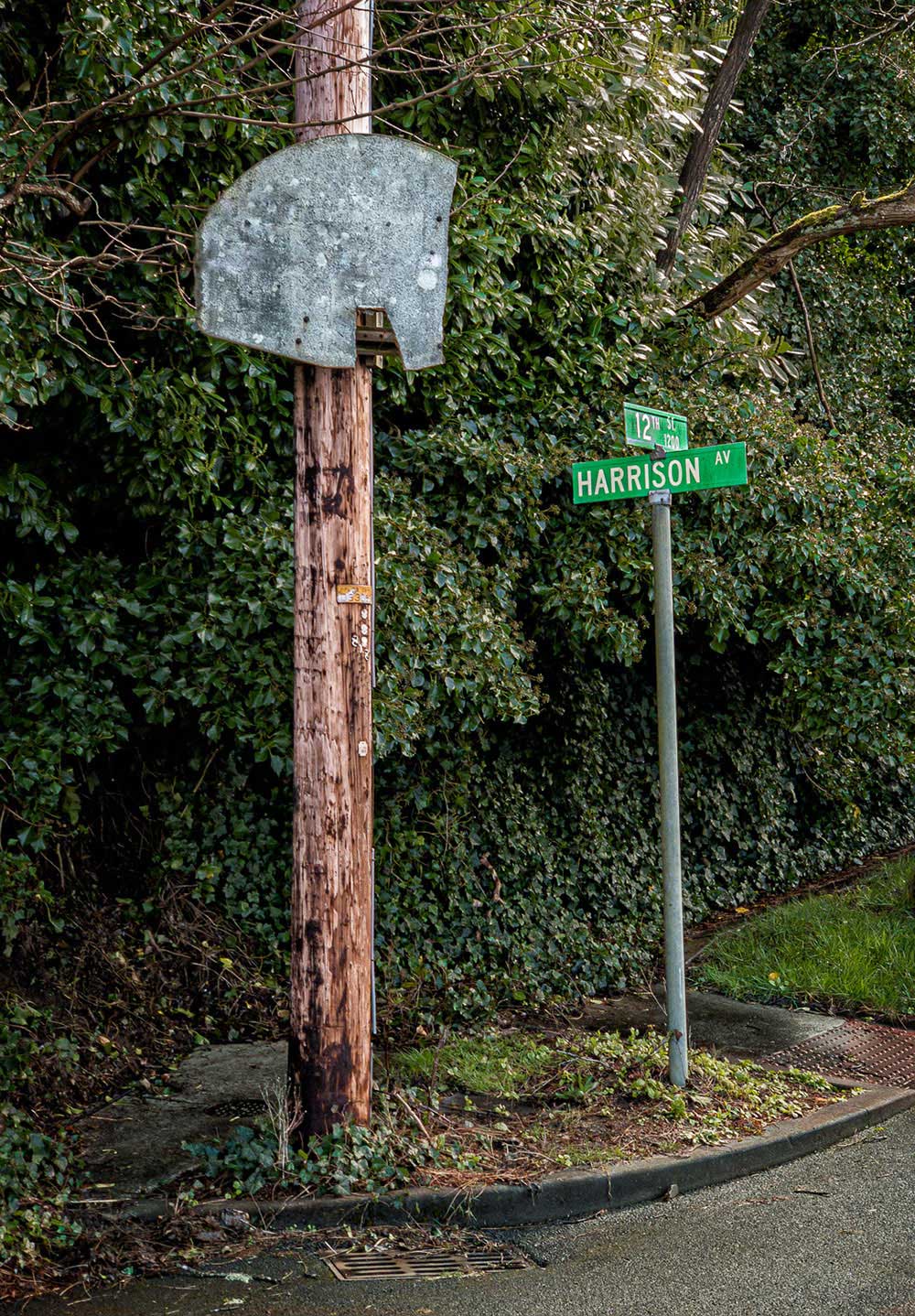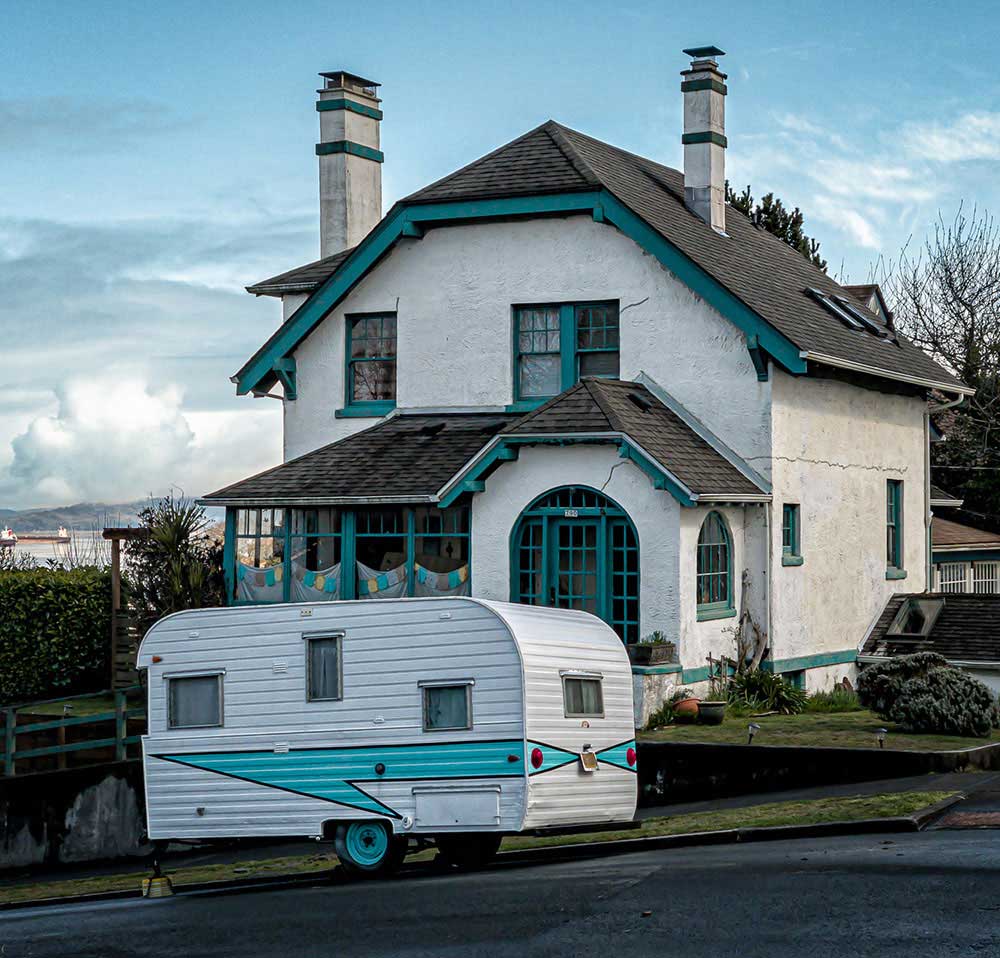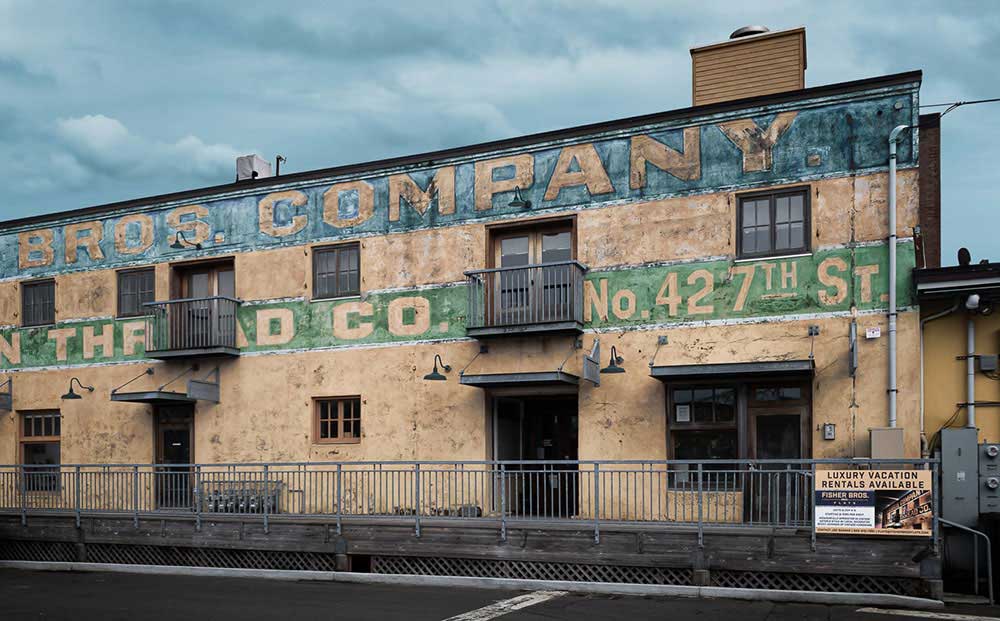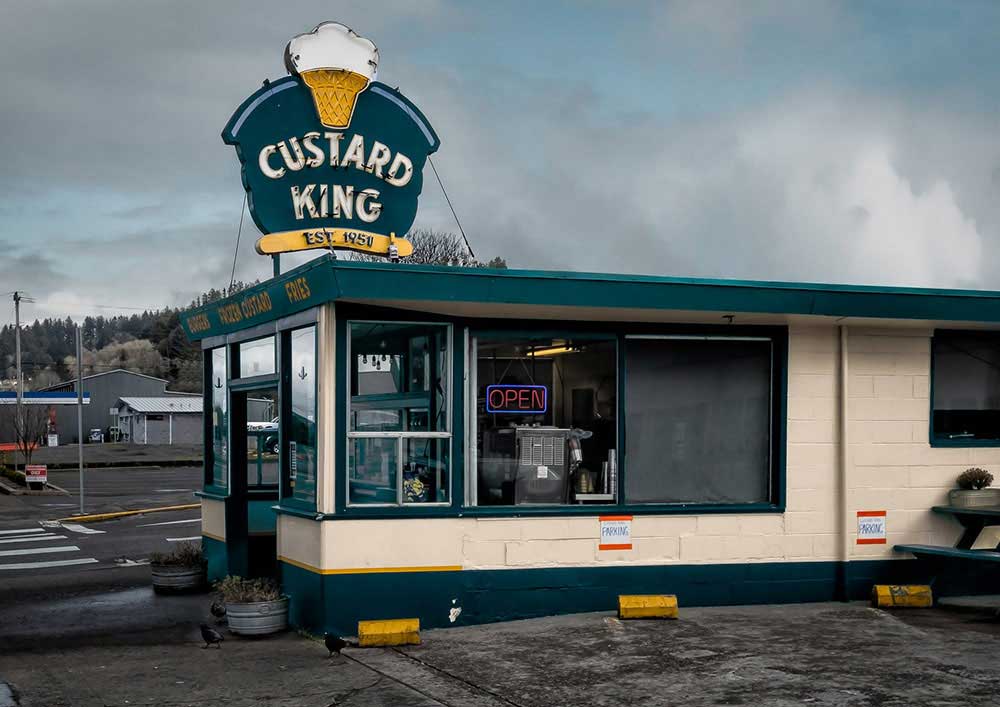I first became interested in the city of Astoria, Oregon after reading an article in the Seattle Times whose title called Astoria “the city where gritty meets pretty.” The gist of the article was that Astoria revels in its history and goes to great lengths to preserve it, and that visitors are welcome to come and explore it.
Since I live only about two hours from Astoria, I decided to go on a road trip and check out the city. What I found surprised me. Astoria has a rich history, no doubt, but in my mind, instead of reveling in its history, Astoria ignores it. I found many decrepit commercial buildings, houses, even abandoned automobiles and trolley cars, all of which were in disrepair and showing their age. It looked to me as if Astoria hit its peak in the 1960s and has been in decline ever since.
I decided to create a photographic essay to make the point that Astoria’s best days were long ago, and I chose the phrase “The Future was Yesterday” for my title. During my several trips to Astoria, I searched out and photographed run-down buildings and vehicles, which are, as the saying goes, “way past their prime.” All of these locations are within two miles of the city’s downtown. Many were shot in the rain, which is plentiful in Astoria, and hopefully adds some moodiness to the photos.
To emphasize that these buildings and vehicles are advanced in age, I chose a five-color palette that, to my mind, call to mind the 1960s. The colors are hot pink, coppertone, avocado, harvest gold (yellow), and sky blue. Anyone who remembers the 1960s will remember these colors from TV commercials, clothing, and even kitchen appliances. I applied this palette to each of my images. I hope that the viewer will see (and feel) the colors and be transported to the past, perhaps back to childhood.
Finally, I would add that I shot these images in a style reminiscent of the New Topographics movement, which I am very fond of.
About Jay Slupesky
Jay Slupesky began his photography journey during his early twenties after he was given an Olympus OM-1 camera. While earning a master’s degree in Electrical Engineering at Stanford University, he took a photography course as an elective and learned to develop and print black-and-white film. After graduation, he began his engineering career and enjoyed street photography in his spare time.
In the early 2000s, he earned another master’s degree, this one in Counseling Psychology, at Saint Mary’s College of California. He then began a second career as a licensed marriage and family therapist, specializing in marriage therapy. During this time he also traveled extensively and his camera work gravitated towards travel and documentary photography. He made the transition to digital cameras during those years and favored the Canon 5D series.
In the 2010s he returned to engineering work and developed mobile applications at Google in Mountain View and San Francisco, California. The apps he co-developed are used by millions of people on a daily basis.
He retired from Google in 2017 and decided to devote himself to photography full-time. Since then he has concentrated mostly on landscape photography throughout the Western United States, with some side projects in New Topographics and Impressionism. He made the jump to mirrorless and now favors the Sony a7R IV. His work has been exhibited in galleries in San Francisco and in Portland, Oregon, where he also resides. [Official Website]



